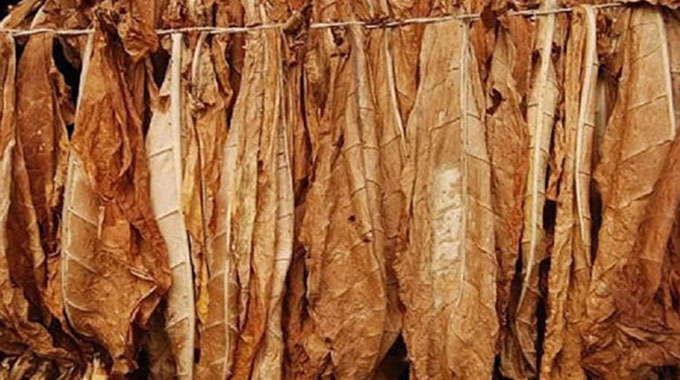‘Properly graded tobacco attracts high prices’

Edgar Vhera
Agriculture Specialist Writer
AFTER years of producing tobacco and trading at both auction and contract floors, some farmers have now realised that proper grading and good quality of the leaf are the key determinants to the rich pickings and not the collusion of buyers as generally suspected.
A farmer plying his trade at Belleview Farm in Goromonzi, Mashonaland East, Mr Fidelis Gweshe yesterday told The Herald Agri-Business that the high prices associated with contract floors were not just fixed but arrived at after a thorough scrutiny of the leaf’s quality.
“After producing the crop for 13 years, I have noticed that properly graded tobacco does not need any bidding at the floors but sells itself. This all emanates from good agronomic practices from seed selection, nursery establishment through to grading.
“Producing the crop under contract has contributed to these good standards. Contractors give inputs on time and later extend technical and working capital for labour. Contract arrangements are advantageous in that you share risk with the contractor,” said Mr Gweshe.
Mr Gweshe has, however, projected a dip in his profit margins next year when the tobacco marketing season starts, as he is currently using expensive diesel to run generators due to over 18 hours of load shedding each day.
Meanwhile, another farmer from Centenary Mr Dzikamai Kambeu has corroborated Mr Gweshe’s testimony saying he planted five hectares of the golden leaf under contract last year and received an average price of US$4, 36 per kilogramme from primings. The highest price he got was US$6, 30 per kilogramme.“I have since expanded my hectarage to 15 this season,” he added.
An A2 farmer at Lochnager Farm in Muzarabani, Mr Masimba Choto also chipped in stressing the importance of curing tobacco correctly to enhance quality saying he was benefitting greatly from the proficiency of the chongololo barn system, which cures better than the conventional barn.
The chongololo system is easy to use, produces high quality leaves, uses less curing fuel, cost effective and has high curing efficiency, he explained.The Tobacco Industry and Marketing Board (TIMB) has always advised farmers that grading starts before the crop is planted. Among some of the points that have a bearing on the outcome of grading are land selection, land preparation, fumigation, fertilisation, seedling selection, topping and suckering, reaping, curing and storage.
TIMB also stresses that the aim of grading is to present tobacco in a manner that enhances both its use and value to the buyers by sorting out leaves of similar characteristics into uniform lots for sale. The grading process is labour-intensive requiring a high degree of management and supervision to ensure maximum benefit is obtained from the product for sale while maintaining an acceptable level of throughput from the grading shed.
There are various technical factors, which buyers take into account when purchasing, processing and packaging tobacco for export. These factors include chemical composition, smoking characteristics, flavour and aroma, cutting quality, filling value or capacity and moisture content of the leaf.
Flue-cured tobacco
To help improve farmer incomes TIMB in conjunction with the Department of Agricultural Research and Extension Services (AGRITEX), Tobacco Research Board (TRB), British American Tobacco (BAT) and Farmers Development Trust (FDT) conducts calendar-based training for small-scale farmers on best agronomic practices. The main training centres are the Trelawney Training Centre, Panorama Training Centre, Dozmerry Training Centre, Nyamazura Training Centre and Magamba Training Institutions.
The training courses cover all aspects of tobacco production from the seedbed, soil testing, land preparation, transplanting, topping right up to curing, presentation and marketing. The yearly target is to train 20 000 farmers.








Comments